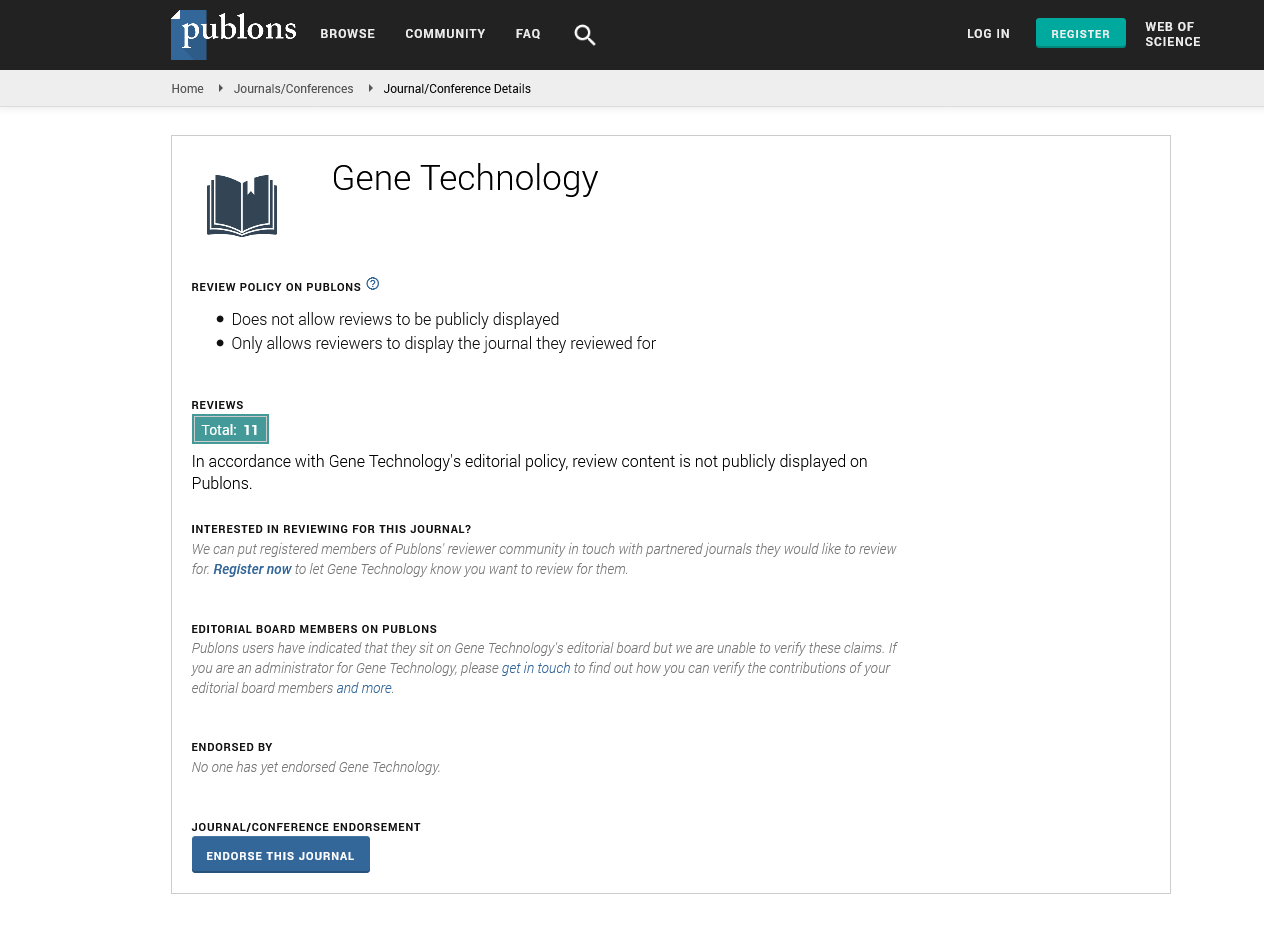Indexed In
- Academic Keys
- ResearchBible
- CiteFactor
- Access to Global Online Research in Agriculture (AGORA)
- RefSeek
- Hamdard University
- EBSCO A-Z
- OCLC- WorldCat
- Publons
- Euro Pub
- Google Scholar
Useful Links
Share This Page
Journal Flyer

Open Access Journals
- Agri and Aquaculture
- Biochemistry
- Bioinformatics & Systems Biology
- Business & Management
- Chemistry
- Clinical Sciences
- Engineering
- Food & Nutrition
- General Science
- Genetics & Molecular Biology
- Immunology & Microbiology
- Medical Sciences
- Neuroscience & Psychology
- Nursing & Health Care
- Pharmaceutical Sciences
Commentary - (2023) Volume 12, Issue 2
Development and Limitations of Genome Editing and Treatment of Cystic Fibrosis Gene Therapy
Hau Li*Received: 03-Apr-2023, Manuscript No. RDT-23-21223; Editor assigned: 07-Apr-2023, Pre QC No. RDT-23-21223(PQ); Reviewed: 21-Apr-2023, QC No. RDT-23-21223; Revised: 28-Apr-2023, Manuscript No. RDT-23-21223(R); Published: 05-May-2023, DOI: 10.35248/2329-6682.23.12.229
Description
Gene therapy has long been a promising avenue for the treatment of cystic fibrosis. In recent years, genome editing has emerged as a powerful tool to precisely target and replace faulty genetic material, enabling a more effective approach to gene therapy. To effectively target the genetic cause of cystic fibrosis, a strategy must target the Cystic Fibrosis Transmembrane Conductance Regulator (CFTR) gene. However, this presents several challenges. CFTR is a large gene, making it difficult to target with current genome editing tools. The gene is located on chromosome 7, which is highly repetitive and prone to rearrangements. This makes it difficult to target without disrupting other areas of the genome. Some CFTR mutations are too small to be effectively targeted by most current gene editing tools. In addition to the technical challenges, there are also safety concerns that must be addressed. For example, off- target effects of genome editing can lead to unintended changes in the genome, which could have harmful consequences. Despite these challenges, is making progress in developing more precise and effective gene editing techniques. Recent advances in CRISPR/Cas9 technology have enabled more efficient and accurate editing, allowing targeting even small mutations in the CFTR gene. In addition, new strategies for delivering gene editing tools to the correct target location are being developed, which could significantly reduce the risk of off-target effects. With continued gene editing could become a viable option for treating cystic fibrosis. However, further work is needed to overcome the technical and safety challenges associated with current gene editing techniques.
Cystic Fibrosis (CF) is a life-threatening genetic disorder that affects thousands of people worldwide. The condition is caused by mutations in the Cystic Fibrosis Transmembrane Conductance Regulator (CFTR) gene advances in genome editing technology have enabled to explore new ways to treat this debilitating condition. Genome editing is a process that involves using enzymes to make precise changes to the genetic code of an organism. This protein is then able to perform its intended role in the body, allowing it to potentially alleviate the symptoms of CF. the cost of the therapy is likely to be high, making it out of reach for many patients. Overall, genome editing for CF gene therapy has the potential to revolutionize the way this condition is treated. While there are still a number of challenges that need to be addressed, this technology offers a promising way forward for those living with CF.
Genome editing for cystic fibrosis gene therapy is a promising advancement in the field of gene therapy. However, it is important to consider the potential risks and safety concerns associated with this technique. One of the major safety concerns related to genome editing for cystic fibrosis gene therapy is the potential for off-target mutations. Off-target mutations occur when the gene-editing agent targets a different gene than intended. In the case of cystic fibrosis gene therapy, off-target mutations could lead to the introduction of unintended changes to the genome, which could cause adverse effects. Another potential risk associated with genome editing for cystic fibrosis gene therapy is the possibility of side effects.
The gene-editing agents used in this type of therapy may cause inflammation, cell death, or other types of side effects. Therefore, it is important to monitor patients closely for any adverse reactions to the gene-editing agents. In addition, it is important to consider the potential ethical implications of genome editing for cystic fibrosis gene therapy. This type of therapy could open the door to more personalized treatments, but it could also lead to unintended consequences, such as the creation of genetically modified humans. Therefore, it is important to consider the ethical implications of this type of therapy before moving forward. Overall, genome editing for cystic fibrosis gene therapy has the potential to be a powerful tool for treating this condition. However, it is important to consider the potential risks and safety concerns associated with this type of therapy before moving forward.
Genome editing, particularly CRISPR-Cas9, can be used to treat genetic diseases like cystic fibrosis. The technology has the potential to be precise, efficient, and cost-effective, and it could provide a viable treatment option for those suffering from genetic diseases. However, the technology is still in its early stages, and there is significant safety and ethical considerations that must be taken into account before it can be used in clinical applications. Additionally, further is needed to understand thelong-term effects of the technology and how to make it more efficient and cost-effective. With these considerations in mind and clinicians are working to move genome editing forward as a viable option for treating cystic fibrosis and other genetic diseases.
Citation: Li H (2023) Development and Limitations of Genome Editing and Treatment of Cystic Fibrosis Gene Therapy. Gene Technol. 12:229.
Copyright: © 2023 Li H. This is an open access article distributed under the terms of the Creative Commons Attribution License, which permits unrestricted use, distribution, and reproduction in any medium, provided the original author and source are credited.

